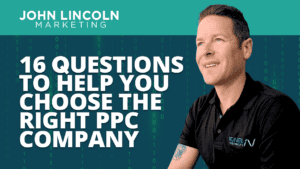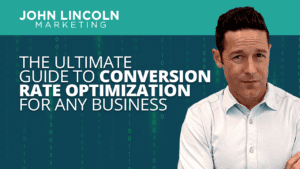On-Page SEO Checklist For Your SEO Strategy

If you’re getting started with SEO, here is an on-page SEO checklist to help you succeed.
On-Page SEO Checklist
In the world of SEO, there are on-page and off-page SEO tasks. On-page SEO involves working on individual pages to help them rank in search engines. This could involve optimizing a page’s code and content. Meanwhile, off-page SEO entails optimizing content off the website, including backlinks.
Step 1: Research What’s Ranking in the SERPs
Before optimizing for on-page SEO, find out what you need to optimize.
You can start by entering a keyword you would like to rank for in Google. You’ll then be able to see what results come up on the search engine results page (SERP).
Also, look at all the individual elements on pages that rank well. You may find that it’s the URL, header, or a specific section that’s helping. For instance, you may see a result in the form of a Rich Snippet. This might come from one concise sentence that covers the keyword you entered.
You can also look into online communities for some help. Platforms like SEO Forum can give you insights into what’s ranking. These forums often have plenty of experts discussing the hottest SEO topics.
Step 2: Complete Extensive Keyword Research
The next step to take is to conduct keyword research. This will involve digging into the keywords you want to target on your pages.
There are many tools you can use for keyword research. Google has its own keyword research tool, for instance. Using these tools, you can figure out which relevant keywords are worth targeting.
You might want to target short-tail keywords with high search volume. However, these are often harder to target because of the competition around them. Instead, look for long-tail keywords that can bring some value. If you can target enough related long-tail keywords, you’ll dominate search engines.
Using these keywords, you can optimize various on-page elements. You can use these terms in your URLs, headers, core content, and more.
In your keyword research, also take Latent Semantic Indexing (LSI) into consideration. LSI is a method of understanding context based on related keywords. While Google uses more advanced methods to understand the content, LSI keywords do matter.
LSI keywords are those that connect to your main keyword. For example, if your page is about “on-page SEO,” LSI keywords would relate to it. These terms could include “marketing,” “content,” and “optimization,” among many others. Search engines may see these words when indexing a page and understand the content. In the process, it can decide which pages are most relevant to include in rankings.
When adding keywords to your content, you’ll want to avoid stuffing. It’s best to include keywords where it makes sense to add them. This will prevent your content from coming off as spammy for search engines and viewers.
Step 3: Analyze & Review URLs
Your page’s URL is important when it comes to SEO. It may seem like a small piece of the optimization puzzle, but you should never overlook it.
One rule for your URLs is to keep them short. If your URLs appear too long, this could turn visitors and search engines away. So, make your URLs short and concise but relevant.
In your URLs, include the main keyword and any relevant modifiers that add context. A good URL will be short while still clearly indicating what the page is about.
Ultimately, a winning URL will be short and descriptive.
Pro-Tip: Do not change your URLs, just keep these tips in mind for new content.
Step 4: Optimize Title Tags & Headers
Title tags are the first thing people will see in search results when a web page ranks. It’s the title of the page and it links to it from the SERP. They can also influence rankings.
A good title tag will feature your main keyword along with relevant modifiers. It shouldn’t be too long, as title tags have a specific limit for pixel width. This means that search engines will cut off your title tag if it exceeds the limit. To make sure your title tags are under the limit, keep them around 55 characters and avoid more than 60.
If possible, use two to three keywords in your title tag and keep the main keyword toward the front. You can use a pipe (“|”) to separate each term, but it’s best to use a natural phrase. It can also include the website’s name if there’s room. For example, a well-optimized title tag might read:
On-Page SEO Optimization for Businesses | Website Name
In addition to your title tags, optimize the headers on your page. These will include your main header, or H1, along with other subheaders. Often, your header will be the same or similar to your title tag. H2s and other subheaders should contain instances of main or supporting keywords.
Step 5: Update Meta Descriptions
In search results, people will also see a meta description under the title tag. This is a short sentence or two that describes the content of the page. It could also include a call to action.
Your meta description should be short and to the point like your URL and title tag. Let people know what they can expect when clicking through the search result. You may also make it easier for them to take action.
Like title tags, descriptions can only be a certain length before search engines cut them off. To avoid going over that limit, keep your meta descriptions around 155-156 characters. This should give you enough space for one or two sentences describing the page’s content.
An example of a good meta description might look like:
“Learn more about [page content]. For more help, reach out to the experts at [company name].”
While meta descriptions won’t help with SEO directly, they can help indirectly. Search engine users will read your description before visiting your site. Your description may then convince them to click through. If the user spends time on your page, this could signal to Google that the result was relevant. This would then give an incentive to Google to rank your page higher.
Step 6: Time To Break Down Page Content
With your URL, title tag, and meta description figured out, it’s time to optimize your page’s content.
There are several elements here that you’ll want to cover, including:
Long-Form Quality Content
Gone are the days when you could write a short paragraph or two, load them with keywords, and easily rank. Google today favors long-form content that brings real value to readers.
You don’t need to write massive pages for every topic, but you should try to be an authority. For example, you can create a pillar page that covers a core topic extensively. You can then branch out into other pages that cover subtopics. Those pages can then link back to that pillar page.
Relevant Information to Search Queries
Your content also must be relevant based on what people are searching. Google will rank your pages higher if people find what they’re looking for on them.
Consider the type of content you’re writing and its specific context. For example, is the content educational and informing readers? Maybe it’s a customer testimonial that lets people know what others had to say about an offering. In other cases, it might be commercial content that encourages purchases. You can then optimize the content based on this context.
Timely Content
While it’s often best to produce evergreen content, some content will be more topical. You might include stats and facts that are accurate today but not tomorrow.
If your website includes any content like this, keep it updated. Look for any facts you used in old blogs or pages. If you find new information, update those facts or stats. This will help keep your page relevant and give accurate information to visitors.
E-A-T Expectations
Google has certain guidelines to help with SEO. One of them is E-A-T. This acronym stands for Expertise, Authoritativeness, and Trustworthiness. If your pages follow these guidelines, they’ll be more likely to achieve high rankings.
To appeal to E-A-T, you’ll need to meet a few criteria. First, your content should display your expertise. It should also establish you as an authority on the topic you cover. Additionally, you and your website should come across as trustworthy.
Producing high-value content that people love will show that you follow these guidelines.
Write for the User Experience
When writing your content, think of the user instead of search engines. You’re not really writing for Google—you’re writing for the people who use it.
If you write to the user experience, you’ll bring more value to them. Remember, search engines want to know that your website is valuable. You can include all the keywords and content you want, but it won’t help if it doesn’t appeal to users.
If people find your content to be valuable and helpful, search engines will see it as such.
Reading Level, Tone and Sentence Fluency
Think about your audiences and the voice that appeals to them. What kind of content resonates with them?
As you write to the user experience, be consistent in your voice. Consider the reading level you want to target and the tone you want to use. Also, consider sentence fluency and figure out the best flow. If you can nail these, your content will connect with users.
Structure
The structure of your content is also critical. You shouldn’t write long paragraphs and large blocks of text. Instead, use shorter paragraphs and sentences.
Good structure makes for more readable content. In turn, you’ll attract more visitors and appeal to search engines.
Step 7: Modifiers
As mentioned, you should target long-tail keywords when possible. One of the easiest ways to do this is to include appropriate modifiers.
For example, you can include words like “top,” “best,” “complete guide,” and more. Depending on the keyword, you can also add modifiers like locations or applications. For instance, you might write “on-page SEO optimization in [city]” or “for [industry].”
You can find some great modifiers to use by entering your main keyword into search engines. You should be able to get some ideas from related searches.
Step 8: Include Multimedia
Apart from written content, include other media to supplement it. This helps mix up your content and gives you more chances to optimize it.
You can use all types of media, including images, infographics, and charts. When including these in content, you can optimize them with alt tags and descriptions. These elements would include keyword instances that boost your on-page SEO.
Also, multimedia engages visitors. Your content will be more interesting with lots of visuals. This will lead to longer page sessions and lower bounce rates. Search engines would then have a better reason to rank your pages higher.
Step 9: Video Optimization
Videos also need good optimization as part of your SEO checklist.
You can optimize your videos by perfecting a few key components:
- Video Titles — Keep video titles short and engaging, and include your keyword.
- Descriptions — Write a full description for your videos. The description should be two or more paragraphs long. They can also include target keywords that help with SEO.
- Relevant Thumbnails — People often decide whether to open a video based on the thumbnail alone. This is why you must ensure your thumbnail is relevant to the video topic. For example, if your video is a product demo, display the product.
- Keep Videos Relevant — Your videos should mesh with the surrounding content. When including videos in pages or blog posts, ensure it’s relevant.
- Include Subtitles — If you can, offer viewers a chance to view the video with subtitles. This makes your videos more accessible and will appeal to people who watch with the sound off.
Step 10: Linking
Another crucial item on an on-page SEO checklist will be linking.
Linking can refer to either internal or external linking. Internal links are links that connect to other pages on the website. Meanwhile, external links lead to outside sources.
Your content should contain a mix of internal and external links. Make sure your internal links are relevant and move people along their journey. Your external links should support any facts or statistics, but avoid competitors.
Internal linking, or interlinking, can help with SEO directly. They can boost the rankings of other pages if you use keywords in anchor text. For example, you could link to a page about “on-page SEO optimization” using that term as link text on another page.
External linking may not boost SEO much, but it’s still helpful. If you’re mentioning different facts and statistics, external links will support them. This gains visitors’ trust and will keep them on your pages longer.
Step 11: Schema Markup
Schema helps give search engines even more context about your web pages. Also known as structured data, it formats data to help all platforms understand it.
This structured data could include everything from images to ratings. These items would improve rich results in search engines and appeal to users. They would also ensure that search engines see your content as relevant.
There are many types of schema markup you can use, such as:
- Images
- Local
- Authorship
- Events
- Weather
- Apps
- Blogs
- Courses
Step 12: Answer FAQs
To cover a topic in full, answer some frequently asked questions. Come up with a list of relevant questions that people often ask and provide concise answers.
FAQs often wind up on Google and other search engines as Rich Snippets. These show up above top organic results in “position zero” and give people clear answers. They may also appear in “People also ask” sections. People won’t need to click through to your site with these answers, but they can for more information.
You can create a dedicated FAQ section on your website, or include FAQ sections on relevant pages. If you need ideas for some FAQs to add, enter your main keyword into Google. You can then look at the “People also ask” section in the results.
Step 13: Generate Quality User Reviews
Reviews for your website and business will help win over audiences. They’ll also help with SEO.
You can start by adding schema markup for review star ratings. This will allow people to see ratings for your site and improve click-through rates. Getting more reviews on your site will also help it rank better.
While you may not be able to stop people from publishing bad reviews, you can appeal to them. If someone gives you negative feedback, provide a thoughtful response. You may be able to fix your mistake or make the person happy in another way. Doing so may improve your reputation by showing that you care.
Step 14: Mobile-First Always
All websites must support mobile devices. As such, it’s crucial for your on-page SEO checklist.
Today, mobile-optimized websites take top priority over others. This means that Google tends to consider mobile versions of websites for indexing. If you don’t have a mobile version, it may be impossible to rank.
When optimizing for mobile, there are certain items to consider. For instance, is the font readable? Does the website look good on a mobile screen? Can people easily tap on buttons using a mobile device?
Providing mobile users with a good experience will ensure your mobile site’s success.
Step 15: Round Out Your Audit with Google Plugin Strategy
One last item on our on-page SEO checklist is the Google Plugin Strategy. Using this strategy, you can keep all website content updated and relevant.
The process involves entering a keyword into Google. You’ll then see results that you can analyze. Based on this information, you can make any necessary changes to pages using that term.
As an example, you might enter the keyword “SEO for businesses.” A list of results will show up including articles, rich snippets, and more. You can look through the top results and see what they’re doing right. You’ll then be able to take cues from these sources to update your content.
With an effective Google Plugin Strategy, you’ll be able to keep your website on top. If you notice any pages dropping in rankings, you can make changes as needed.
Complete On-Page SEO Checklist
As you build your own SEO checklist, account for all these elements. Taking the right approach will help you develop a winning strategy.
A combination of on-page and off-page SEO will keep you above competitors. It will also supplement other marketing efforts to ensure long-term success.
Welcome To John Lincoln Marketing
Welcome to John Lincoln’s personal website. You can learn about John Lincoln’s books, films, book him to speak and contact him. John is directly associated with many of the businesses mentioned on this website and freely discloses this information.
About the Author

John Lincoln is CEO of Ignite Visibility, one of the top digital marketing agencies in the nation. Ignite Visibility is a 6x Inc. 5,000 company. Ignite Visibility offers a unique digital marketing program tied directly to ROI with a focus on using SEO, social media, paid media, CRO, email and PR to achieve results. Outside of Ignite Visibility, Lincoln is a frequent speaker and author of the books Advolution, Digital Influencer and The Forecaster Method. Lincoln is consistently named one of the top digital marketers in the industry and was the recipient of the coveted Search Engine Land “Search Marketer of The Year” award. Lincoln has taught digital marketing and Web Analytics at the University of California San Diego since 2010, has been named as one of San Diego’s most admired CEO’s and a top business leader under 40. Lincoln has also made “SEO: The Movie” and “Social Media Marketing: The Movie.” His business mission is to help others through digital marketing.
Get Social
Contact John Lincoln
Want to get in touch with John Lincoln? Click Here To Reach Out.
Related Posts

Top 16 Questions to Ask a PPC Company in 2024
In 2024, choosing the right PPC company is not just about spending your advertising budget. You want to make every cent count towards your business

The Ultimate Guide to Conversion Rate Optimization for Any Business
Whether you’re a seasoned marketer or just starting out, conversion rate optimization (CRO) is a powerful tool that can boost your sales, leads, and overall

16 Questions to Help You Choose an SEO Company
Feeling overwhelmed by the sea of SEO companies out there? You’re not alone! Choosing the right partner is crucial for achieving your online marketing
